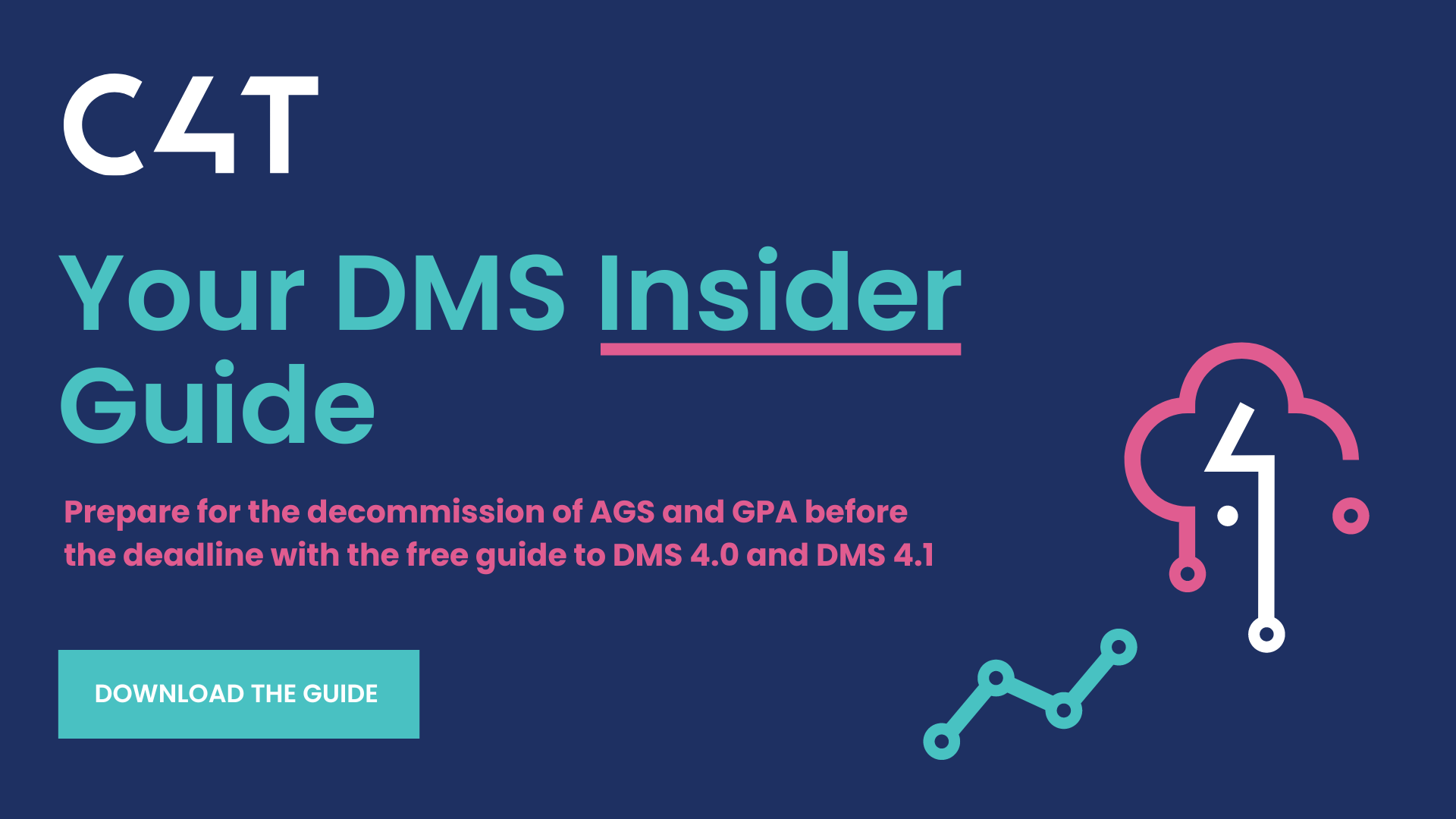Why has AGS been replaced?
In order to comply with the Multi-Annual Strategic Plan (MASP) and the accompanying Union Customs Code (UCC) legal requirements, Dutch Customs have been implementing the new declaration system, DMS 4.0, which replaced the AGS declaration system. This change requires declarants to use technology-driven processes that can cope with the new, highly automated, real-time declarations. DMS 4.0 is accompanied with a release of DMS 4.1, replacing the GPA and SPA processes. C4T is aligned with Dutch Customs to ensure CAS is fully integrated with DMS.
The key implications of the DMS changes

Traders that previously used the globalisation possible in the GPA/SPA system in combination with an Entry in the Declarant's Records (EiDR) or a customs warehousing authorisation must choose whether to keep their current customs authorisations or not. This will impact the way in which they will be able to manage their declarations processes.

DMS forces traders to make use of new data sets aligned with the UCC. The declarations that can be made under this model include all types of import, export, and storage declarations, with the exception of EiDR, and will allow declarants to lodge declarations in real time.

DMS 4.1 allows traders to perform EiDR (IIAA, Inschrijving in de Administratie van de Aangever) declarations with or without the so-called chain arrangement (ketenregeling). These declarations consist of several main elements: the presentation notification (aanbrengbericht), followed by an EiDR and, after 10 days, a supplementary declaration. Throughout the process, an audit file of your stock records must be maintained in a way that is prescribed by customs. DMS requires a different mindset compared to GPA/SPA with slightly different flows. Traders need to know their volumes, think in terms of processes, and be aware that timing is key.

Keep Authorisations?
Traders that previously used the globalisation possible in the GPA/SPA system in combination with an Entry in the Declarant's Records (EiDR) or a customs warehousing authorisation must choose whether to keep their current customs authorisations or not. This will impact the way in which they will be able to manage their declarations processes.

New Data Sets
DMS forces traders to make use of new data sets aligned with the UCC. The declarations that can be made under this model include all types of import, export, and storage declarations, with the exception of EiDR, and will allow declarants to lodge declarations in real time.

Chain Arrangement
DMS 4.1 allows traders to perform EiDR (IIAA, Inschrijving in de Administratie van de Aangever) declarations with or without the so-called chain arrangement (ketenregeling). These declarations consist of several main elements: the presentation notification (aanbrengbericht), followed by an EiDR and, after 10 days, a supplementary declaration. Throughout the process, an audit file of your stock records must be maintained in a way that is prescribed by customs. DMS requires a different mindset compared to GPA/SPA with slightly different flows. Traders need to know their volumes, think in terms of processes, and be aware that timing is key.
Prepare for the transition
Take advantage of our checklist which outlines the five steps you need to follow to prepare for DMS.
Also available in Dutch:
Customs duty relief
There are certain Special Procedure authorisations that are particularly helpful when trading in the Netherlands, one where you can see a significant return is the Customs or Bonded Warehouse (CWH) authorisation. This authorisation allows either a reduction or complete relief from customs duty and taxes in applicable circumstances.
Are you interested in automating your customs declarations? See how CAS does this while also continuously updating in accordance with changing regulations from Dutch customs.
Save up to 90% on customs administration
Drive down costs, manage local, regional, and worldwide customs and speed up turnaround times for UK and European importers and exporters. All within one single platform.






